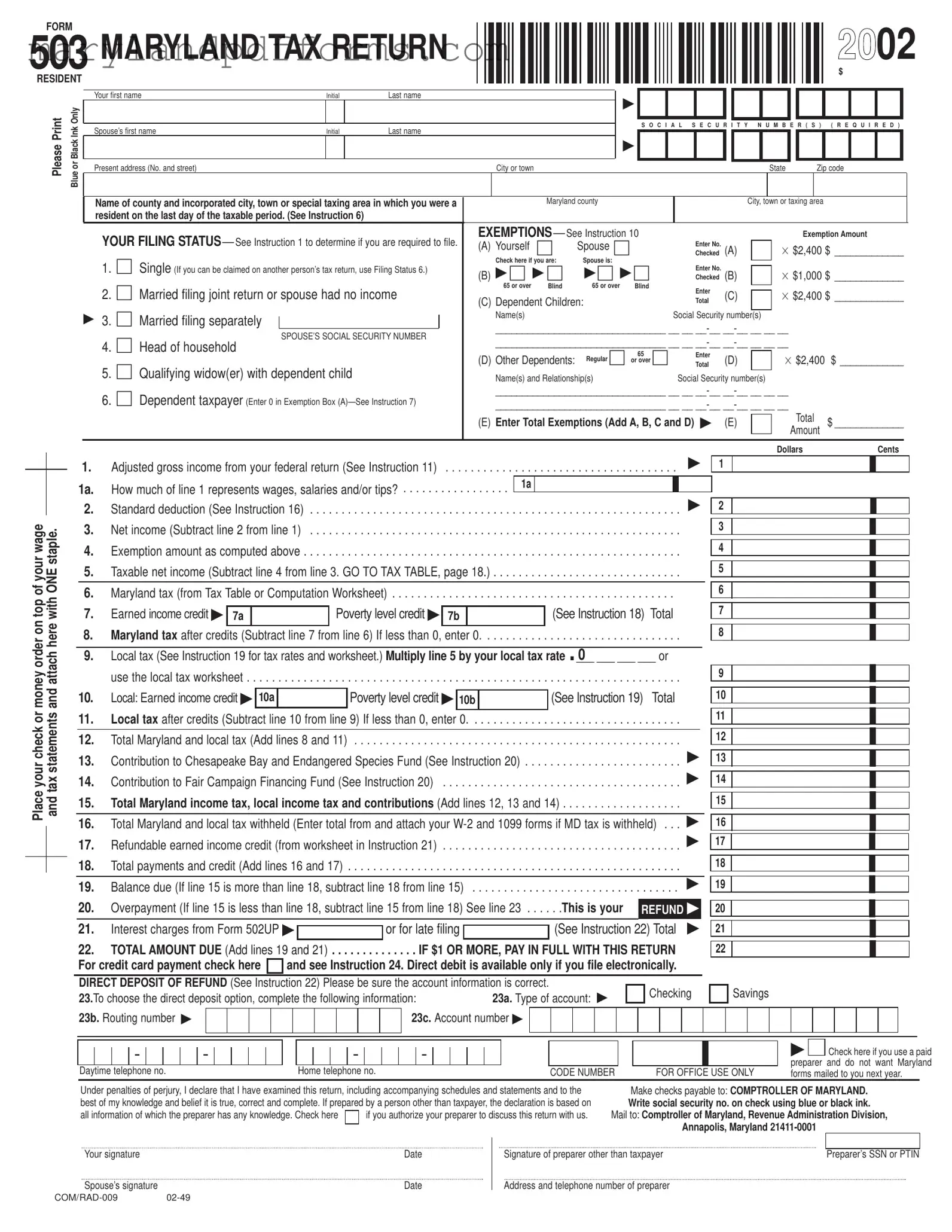Blank Maryland 503 Template
The Maryland 503 Form is a tax return specifically designed for residents of Maryland. This form allows individuals to report their income and calculate their state tax obligations efficiently. Completing the Maryland 503 Form accurately is essential for ensuring compliance and maximizing potential refunds.
To fill out the form, please click the button below.
Fill Out Maryland 503 Now
